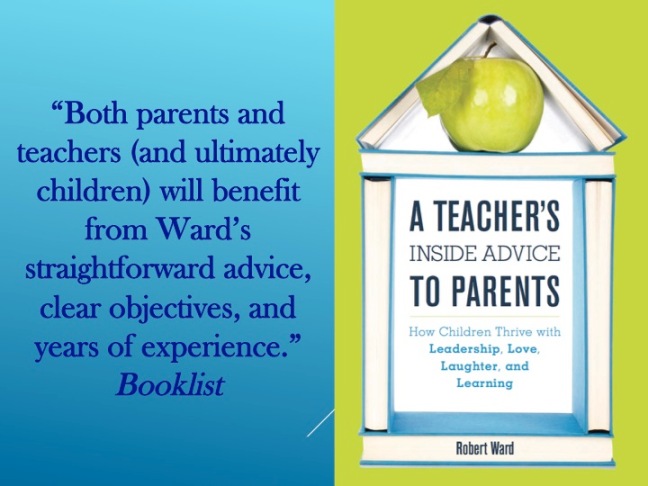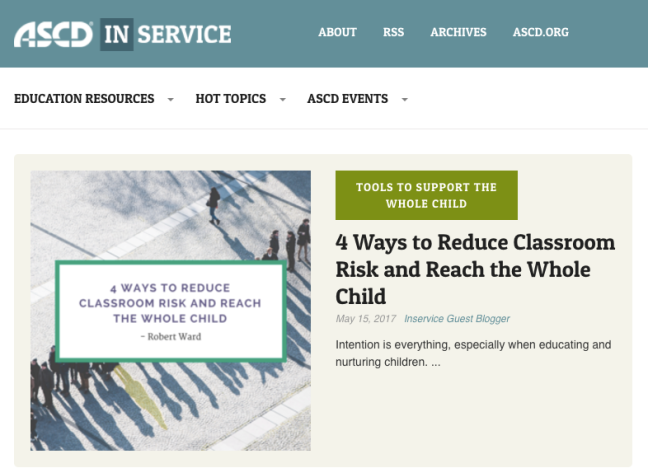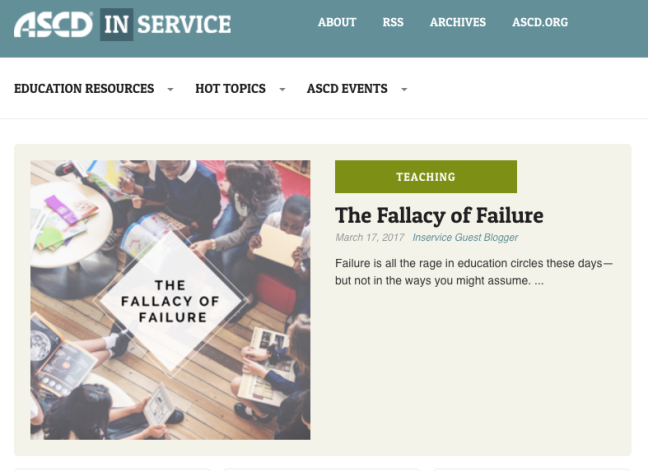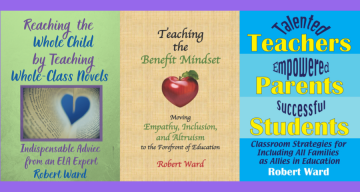Intention is everything, especially when educating and nurturing children. Words matter, and specificity with vocabulary determines whether or not adult interactions with kids have the desired impact.
One misguided message many teachers instill in their students is that risk-taking is good. On the surface, this may seem like a worthwhile component of social-emotional learning.
Yet I reiterate to my students that generally and within reason what one thinks of as risk is not truly risky at all. Especially where school is concerned, the vast majority of “risks” that tend to paralyze children and prevent them from making any academic attempt whatsoever contain no actual danger, undue burden, or extraordinary sacrifice.
Granted, even in the best of situations a student’s active participation and investment in school sometimes contain a dash of discomfort, an element of uncertainty, and an enormous amount of effort and attention. However, the notion of irreversible calamity must be completely erased from the school setting.
Trying something new—even if it is a bit scary—and taking chances—even if there is a potential downside—have nothing to do with genuine risk or actual failure.
The fear of ridicule, rejection, and reversal of fortune is what really holds too many students back. Children routinely conclude it is best not to try when there exists any possibility of mockery, not measuring up, or messing up the status quo (no matter how low a bar some students may have set for themselves).
Of course, downplaying risk does not mean we want kids to rush headlong into truly treacherous pursuits or even to make routine decisions wantonly. A child’s immature prefrontal cortex certainly requires some dutiful adult admonition and supervision. Parents, teachers, and children also have every reason to be wary in legitimately dicey situations. Yet being chronically worried or woebegone is no way to empower kids and no environment in which to learn.
Therefore, teachers should not completely dismiss risk. We just need to place risk in its proper context and ensure that the occasions when real risk is possible are kept decidedly rare.

Reducing the Risk Factor
This is why a teacher is responsible for much more than academics. Rather than merely talking about risk, teachers must actively mitigate the very factors many students consider too terrifying to take a chance on. This does not mean coddling kids but providing them with the coping skills to weather inevitable complications, frustrations, and miscalculations.
Teachers themselves can certainly reduce risk by making their classrooms safe, supportive, stimulating, and scholarly. Yet by also supplementing each student’s personal growth in the following four areas, teachers further prepare kids to face the realities and rigors of school undaunted, thereby releasing them from their most common concerns regarding “risk.”
Social smarts and civility are essential aspects of learning, so cultivate a classroom sanctuary of courtesy and cooperation where intentional embarrassment and disrespect simply do not occur. Being a strong and worthy leader ensures a soothing sense of security, structure, and stability that influences self-reliance and self-monitoring in students. Responsible, reliable, and respectful students eschew reckless behavior, which lowers the risk factor for all.
Self-Confidence
Emotional acuity is another equally vital element of learning. Teachers must encourage, empathize with, and attend to each student in order to shore up their inner strength, especially during those times when kids make errors, doubt themselves, or fall short of their goals. This noble love and caring that teachers lavish upon their students emboldens kids to love themselves—and each other. The resulting feelings of trust and inclusion decrease common student apprehensions of social interaction and public performance.
Soulful sustenance is yet another crucial learning component. Each child’s sense of purpose and personal passion is what compels them to actually strive to achieve their hopes and realize their potential, even when the going gets tough. The infectious classroom laughter, creativity, and collaboration that inspire and deeply engage students transform what may have once been considered risky into fascinating, scholarly quests on which students enthusiastically embark together, as well as continue to explore on their own.
Students equipped with the knowledge, wisdom, and skills necessary to accomplish the academic tasks before them view ever-increasing rigor and requirements as simply part of the routine of learning. When pushed beyond their comfort zones, these students do not falter; they actually become energized by new demands and strive to surpass them.
As a deft facilitator, prepare all of your students for similar accomplishment through strategic differentiation and targeted assistance. Each student may not reach the same level at the same time, but all can certainly move forward each day. These small, sequential steps indeed count—not only towards end goals but towards the confidence and capabilities that make those objectives eminently achievable.

Attitudes and Actions that Work
When parents and teachers work together to provide every child with a consistent combination of leadership, love, laughter, and learning, kids are not so easily foiled by fear, focused on failure, or restrained by risk. Through this whole-child approach, every child not only endures, they thrive.
Platitudes like “Fail forward!” and “Take risks!” do not send kids useful messages. They instead obscure the facts that challenge does not at all equal failure and that risk should be the last thing on one’s mind when taking a sincere shot at something worthwhile.
They also mask that most risks are based on fears the best of parents and teachers have taken great pains to allay. Some trepidation always lingers, especially for children, but facing one’s fears, no matter how irrational, is the best way of slaying dragons.
Then when those beasts are finally exposed as the pesky little lizards they really are, kids gain powerful wisdom. They realize achieving things that are truly meaningful entails working diligently, patiently, and intelligently for them.
They also discover that positivity, belief, and gratitude transform all of their requisite work and waiting into a thoroughly fulfilling process. Once children have a realistic vision of the ups and downs of life, they begin to approach their goals with the acquiescence, aplomb, artistry, and action that turn dreams into actualities.
Fear, failure, and risk simply are not invited to the party—not because they are negative but because they bear no actual pertinence to the endeavor at hand. If they must be acknowledged at all, expose them for the frequent frauds they are.
***
In the Comments section below, please share your ideas and opinions on how words like “failure” and “risk” must be placed in their proper context. Have teachers gone too far in using these words when we should instead be focused on providing strategies to overcome struggle and to build confidence?

For more on how parents and teachers must work together to educate and nurture the whole child, check out Robert Ward’s #1 New Release on Amazon, A Teacher’s Inside Advice to Parents: How Children Thrive with Leadership, Love, Laughter, and Learning.

This article originally appeared on the ASCD Inservice blog and is a companion to my other ASCD article, The Fallacy of Failure.




https://twitter.com/ScottGUribe/status/864295843016437760
LikeLike
LikeLike
LikeLike
LikeLike
LikeLike
https://twitter.com/valerietilton/status/864666165993504768
LikeLike
LikeLike
LikeLike
LikeLike
LikeLike
LikeLike
LikeLike
LikeLike
LikeLike
LikeLike
https://twitter.com/BretMistergesl/status/865214529457803264
LikeLike
LikeLike
LikeLike